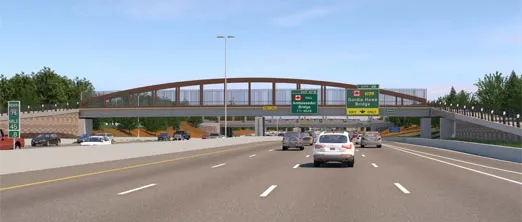In a new report, researchers conclude that it is possible, both technically and economically, to build a 1.7km wooden bridge between the towns Biri and Moelv. Importantly, the report notes that construction cost differences between a wooden and concrete structure would be little.
Estimates for a wooden bridge are around €420 million while for a concrete structure would come in about €410 million, according to Trond Arne Stensby, project manager at the Norwegian Public Roads Administration -
The 468m-deep Lake Mjøsa is one of the deepest in Europe and the fourth-deepest lake in Norway. It stretches for 117km and is about 15km at its widest. The lake is 123m above sea level and lies about 100km north of the capital Oslo.
One bridge already crosses the lake, the Mjøsa Bridge that was opened 1985 and is part of the main north-south highway in Norway, the E6. The concrete box girder bridge has spans of around 69m and rests on piles in water up to 40m deep. The bridge has two lanes of traffic and separate pedestrian and cycling lane.
Previous studies have considered a four-lane link on Highway E6 between the cities of Hamar and Lillehammer – site of the 1994 Winter Olympics. Timber construction alternatives include a truss structure with two underlying trusses composite with a concrete bridge deck. Typical span width is 69m and be cable stay supported.
Norway considers wooden bridge across Lake Mjosa
Norway could be home to the world’s longest wooden bridge if the government gives the go-ahead for a span across Lake Mjosa. In a new report, researchers conclude that it is possible, both technically and economically, to build a 1.7km wooden bridge between the towns Biri and Moelv. Importantly, the report notes that construction cost differences between a wooden and concrete structure would be little. Estimates for a wooden bridge are around €420 million while for a concrete structure would come in about €
May 12, 2017
Read time: 2 mins
Norway could be home to the world’s longest wooden bridge if the government gives the go-ahead for a span across Lake Mjosa.







